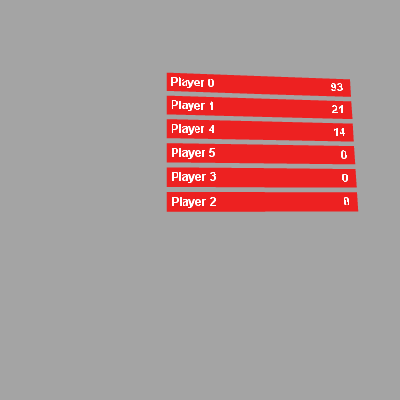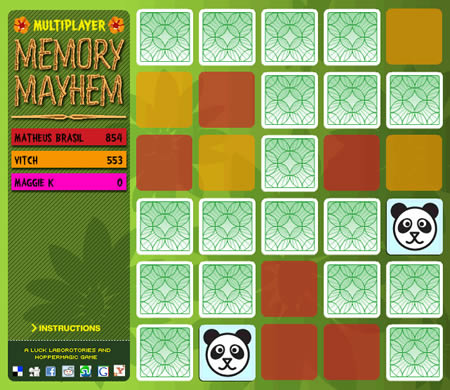February 13th, 2009
This happened is a series of events focusing on the stories behind interaction design. Having ideas is easier than making them happen. We delve into projects that exist today, how their concepts and production process can help inform future work.
This happened is an event originally organised by Chris
O’Shea, Joel Gethin Lewis and Andreas Müller in London. I’ve been lucky enough to attend a few times and it is always really interesting and inspiring. The fact that the speakers talk about the process and the failures along the way is much more interesting than someone just showcasing their work. And I find the field of “interaction design” really interesting – a world somewhere between computers and the real world and somewhere between art and science.
So when Chris asked if I’d help out with a flickr viewer for the new website I was more than happy to help. I put together a little swf which is used throughout the site. It connects to the Flickr API (using as yet unfinished and unrealeased as3 version of flashr) and grabs photos matching certain machine tags. Depending on where in the site you are the swf displays relevant photos (e.g. from a particular city or a particular event) as a simple slidehow. The thishappened team can easily choose to display any photos that attendees have uploaded to flickr with relevant permissions. And they keep editorial control over the content via a special “auth” machine tag which they can generate through their CMS. It’s all pretty simple but it’s a nice way to bring user generated content to their site easily.
This happened is branching out and encouraging people to host events across the world so keep an eye out for one near you (or even set one up yourself) and if you get the chance make sure you attend.
2 Comments | In: AS3, flash, flashr | tags: AS3, flash, flashr, flickr, imadethis. | #
February 12th, 2009
Update: shAIR is
now called Sharify so I’ve updated the links below to point to the new website.
I am very pleased to announce the release of my latest project: shAIR. It is a product that is designed to be used by developers of Adobe AIR applications and makes it very easy for those developers to add “shAIRware” functionality to their applications.

To quote
Dr Woohoo – an early beta tester of shAIR:
shAIR solves the greatest challenge to the AIR platform for serious developers – how to integrate a trial period, registration & authentication – by creating a simple solution that helps protect and commoditize their applications and intellectual property. It’s simply brilliant!
shAIR is a combination of an as3 swc file and the website/
API which this connects to. A developer integrates the swc into their application and uses the administration panel on the shAIR website to create and administer licenses for the application.
The beautiful identity and website design was done by my good friends over at hoppermagic – thanks guys :) You should get in touch with them if you want to commision any similarily exquisite work!
The launch of shAIR is also interesting because it marks a change in the direction of my company (Luck Laboratories Ltd) from a purely consultancy based company to one which also produces it’s own products. It’s going to be an interesting ride but I’m really excited by the possibilities for shAIR and looking around the web I think it is something that lots of people have been looking for.
Comments Off | In: air, AS3, flash, flex | tags: air, imadethis, shair. | #
December 31st, 2008
This Christmas I am living in Canada whilst most of my friends and family are back in England or elsewhere. So I decided to make a virtual Christmas card that I could easily and quickly send anywhere. So here’s one for the reader(s?) of my blog:

You can click on the card to flip it over and read the message on the back but remember to flip back and see how the snow stacks up on the figures in the foreground… It’s not exactly realistic but I like it :)
I managed to put the whole thing together in about a day (which didn’t stop me being about a day late sending it out!) thanks to a bunch of open source projects. So massive thanks to the authors of and contributors to:
- Papervision for the 3d (although thinking about it, I could have possibly tried to do something this simple using the new “postcards in space” 3d of the flash player 10).
- Flint particle system for the snow (and I’m hoping to do more with this engine soon – it’s really nicely put together).
- Pure MVC for holding it together.
- Code Igniter for the backend (so I can send different cards to different people).
- GTween for the tweening.
- And also to Icon Drawer for the icons who are standing in the foreground of this card.
And now it’s time to go out and celebrate the approach of another year! I’m looking forward to lots of cool stuff for next year, both work and play. So Happy Christmas and Happy New Year everyone!! And all the best for 2009 :D
4 Comments | In: off-topic | tags: AS3, flash, flintparticles, imadethis, papervision3d. | #
October 31st, 2008
I’ve just released my entry into the Nonoba Multiplayer API Kick Off competition. It’s a multiplayer take on the old memory cards game where you have to turn over pairs of cards and try to remember what was under each one. The multiplayer aspect makes it much more frantic and fun as other players are looking at the same cards at the same time as you and you don’t want them to steal your pairs!
It will probably make more sense if you try it out yourself so go ahead and click the image below to play multiplayer memory mayhem!
My good friend
Leigh Kayley did the designs (including illustrating all of the cool animals) and I built the game using
Papervision,
PureMVC,
GTween and the
Nonoba multiplayer API.
While I was building the game I did a little prototype for the score board transitions using papervision which you can see by clicking the image below. Click anywhere in the movie to give a random player some random points (and so maybe rearrange the scores) and press any keyboard key to toggle some mouse following behaviour.

Unfortunately in the game you can’t really see the 3d transitions on the scores so I thought I’d upload this for people to look at. And I’ve also uploaded the
source code for anyone who is interested. It’s probably not the best because it was a prototype stuck together quickly but it may be useful to someone…
Update:
I’m pleased to say that Multiplayer Memory Mayhem won third prize in the multiplayer kickoff competion on
Nonoba… Yay!
4 Comments | In: AS3, flash, flex, games | tags: AS3, competition, flash, games, imadethis, multiplayer. | #



